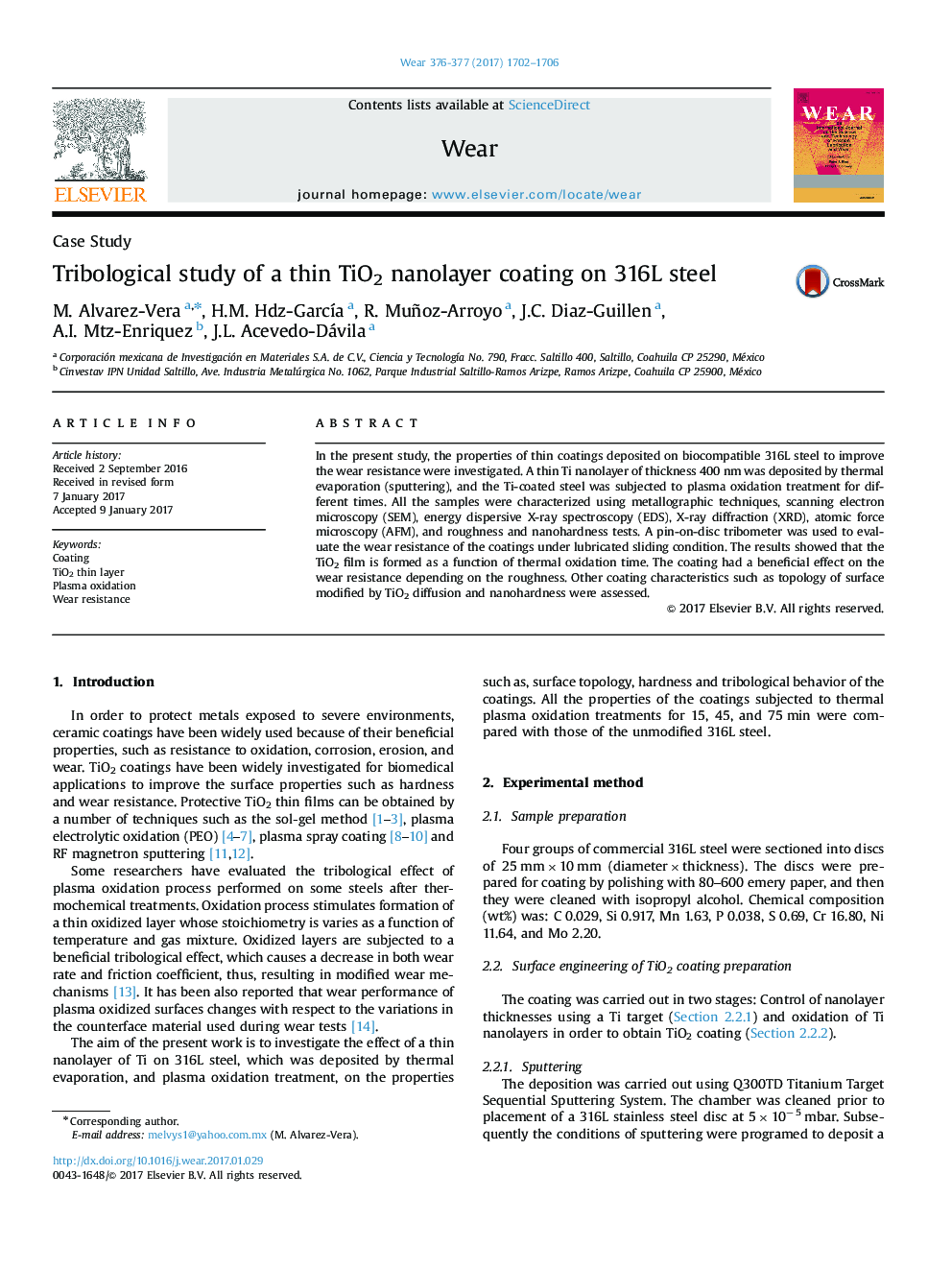| Article ID | Journal | Published Year | Pages | File Type |
|---|---|---|---|---|
| 4986616 | Wear | 2017 | 5 Pages |
Abstract
In the present study, the properties of thin coatings deposited on biocompatible 316L steel to improve the wear resistance were investigated. A thin Ti nanolayer of thickness 400Â nm was deposited by thermal evaporation (sputtering), and the Ti-coated steel was subjected to plasma oxidation treatment for different times. All the samples were characterized using metallographic techniques, scanning electron microscopy (SEM), energy dispersive X-ray spectroscopy (EDS), X-ray diffraction (XRD), atomic force microscopy (AFM), and roughness and nanohardness tests. A pin-on-disc tribometer was used to evaluate the wear resistance of the coatings under lubricated sliding condition. The results showed that the TiO2 film is formed as a function of thermal oxidation time. The coating had a beneficial effect on the wear resistance depending on the roughness. Other coating characteristics such as topology of surface modified by TiO2 diffusion and nanohardness were assessed.
Related Topics
Physical Sciences and Engineering
Chemical Engineering
Colloid and Surface Chemistry
Authors
M. Alvarez-Vera, H.M. Hdz-GarcÃa, R. Muñoz-Arroyo, J.C. Diaz-Guillen, A.I. Mtz-Enriquez, J.L. Acevedo-Dávila,
